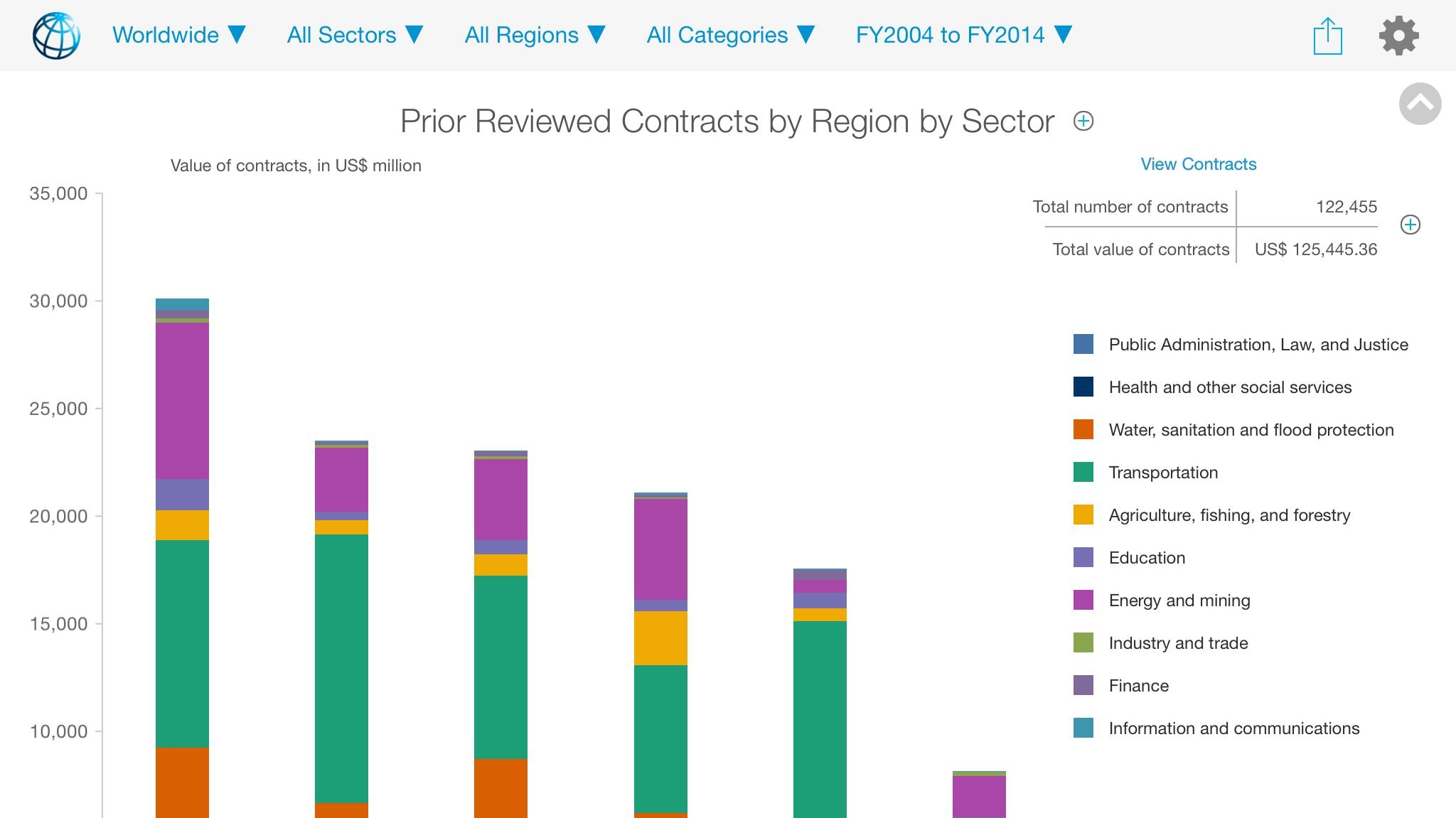For example, selecting the Region or Category from the App’s menu displays bar graphs showing the distribution of awards in a specific geographic location organized by civil works, goods, consulting services, and non-consulting services. The results can be filtered further by fiscal year and economic sector. Users can view contract awards ranked by top supplier country or by client country. The App allows all visualizations and data tables to be shared by email, social media or through a link.
Open Data and the Bank’s Procurement Reform
The Procurement App is one of several transparency initiatives currently under way. The convergence of new access to information policies, modernization reforms, and various technologies has helped the Bank work differently. As part of its procurement reform and modernization agenda, the Bank has been finding ways to help clients modernize their own procurement systems through open data and knowledge sharing.


